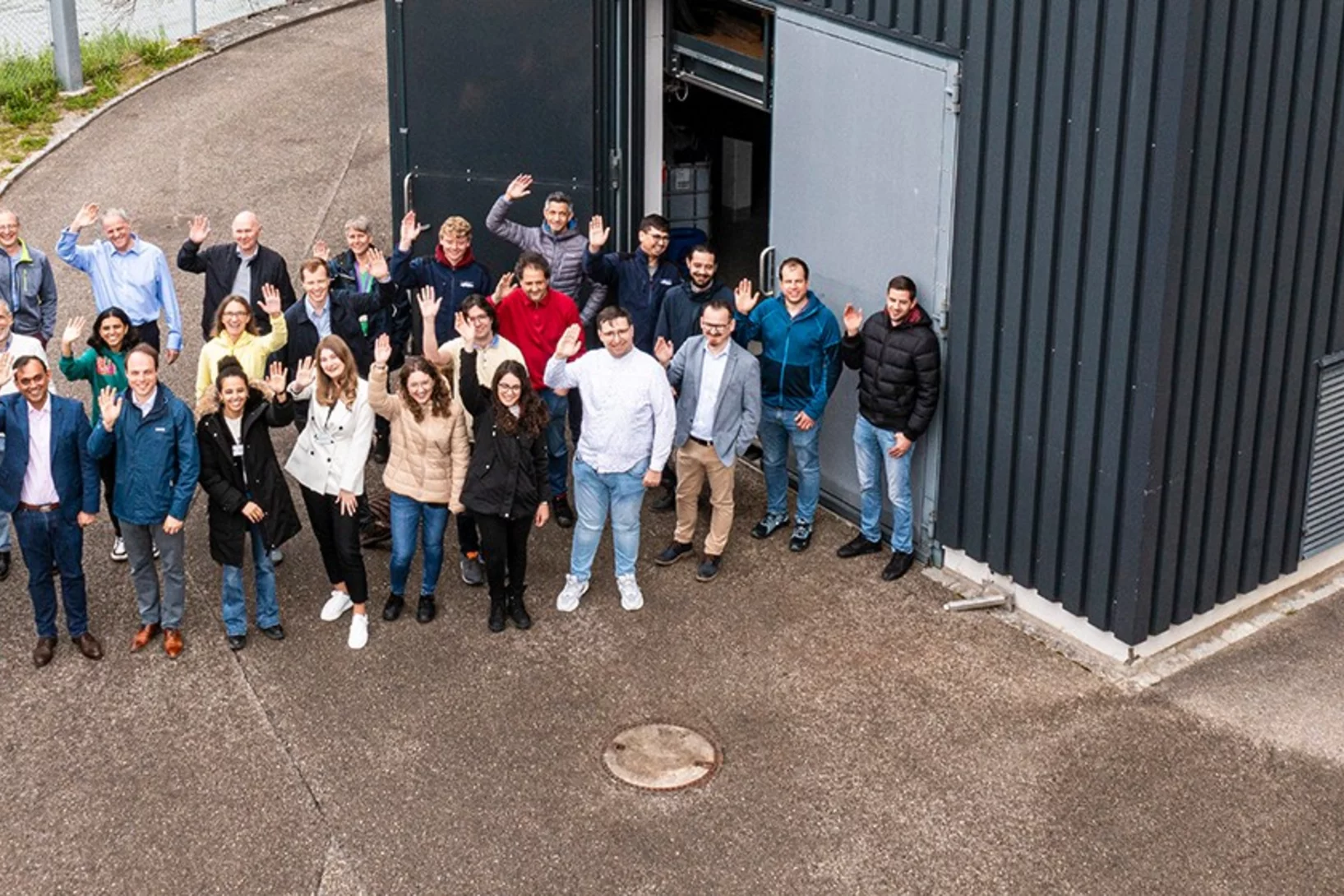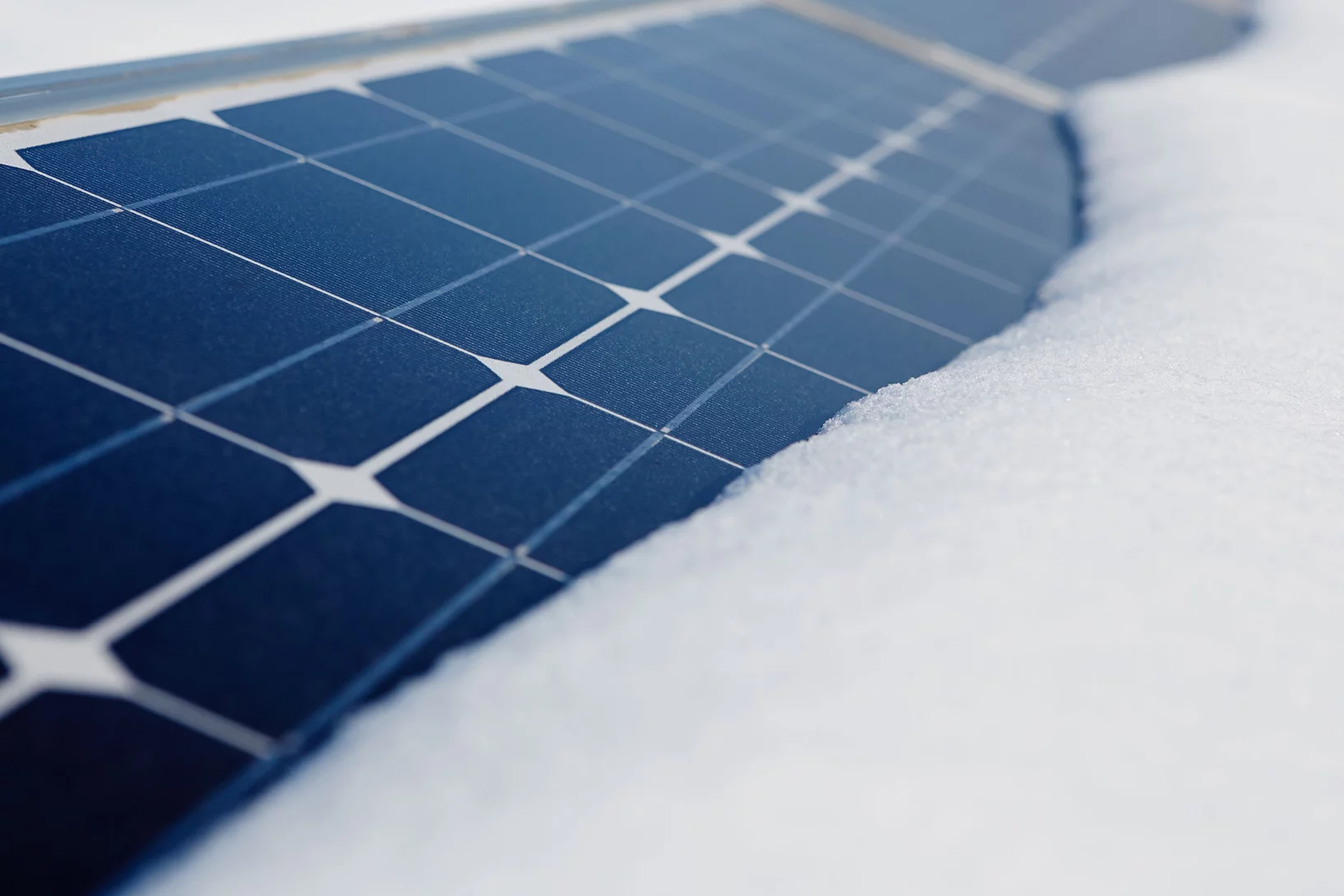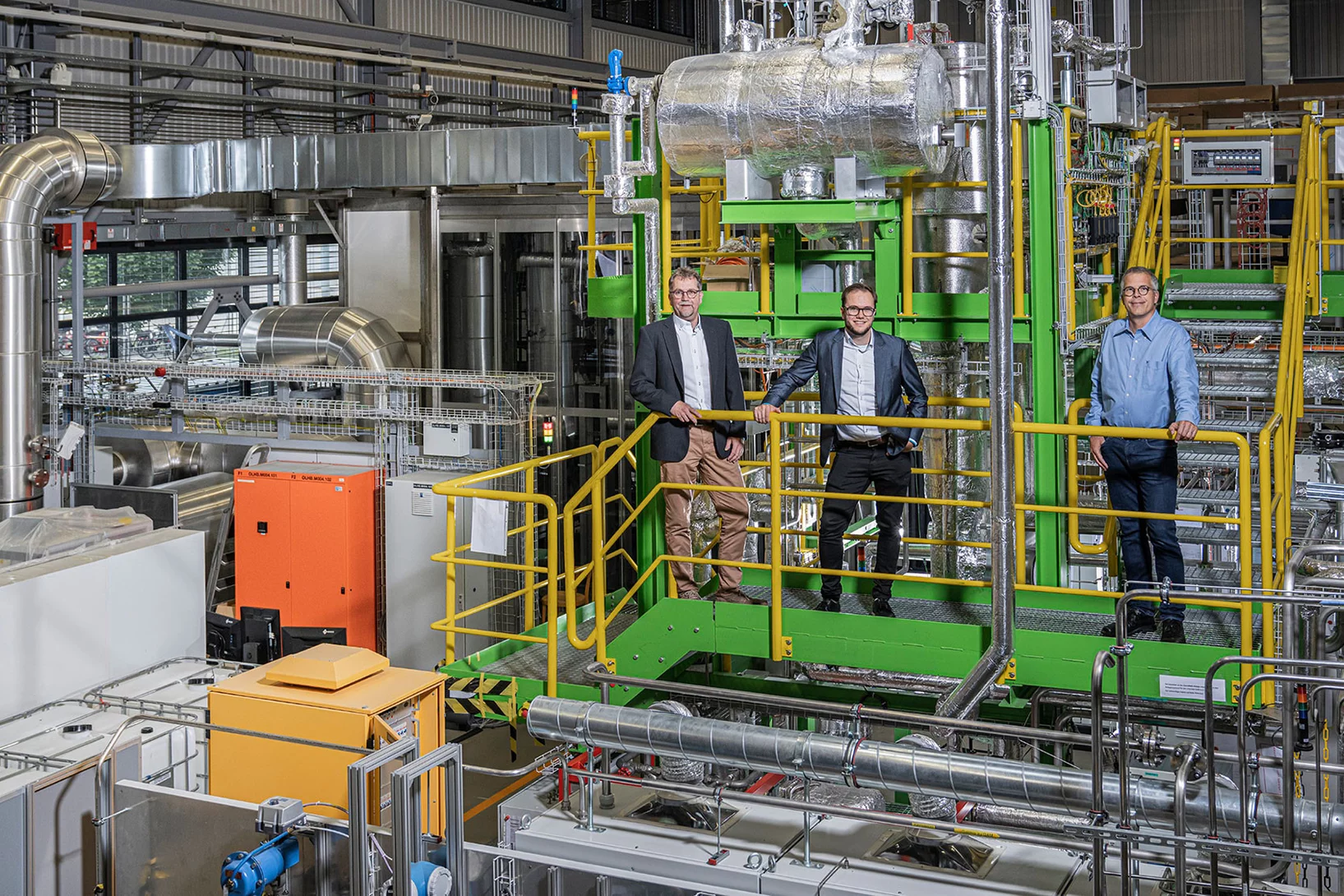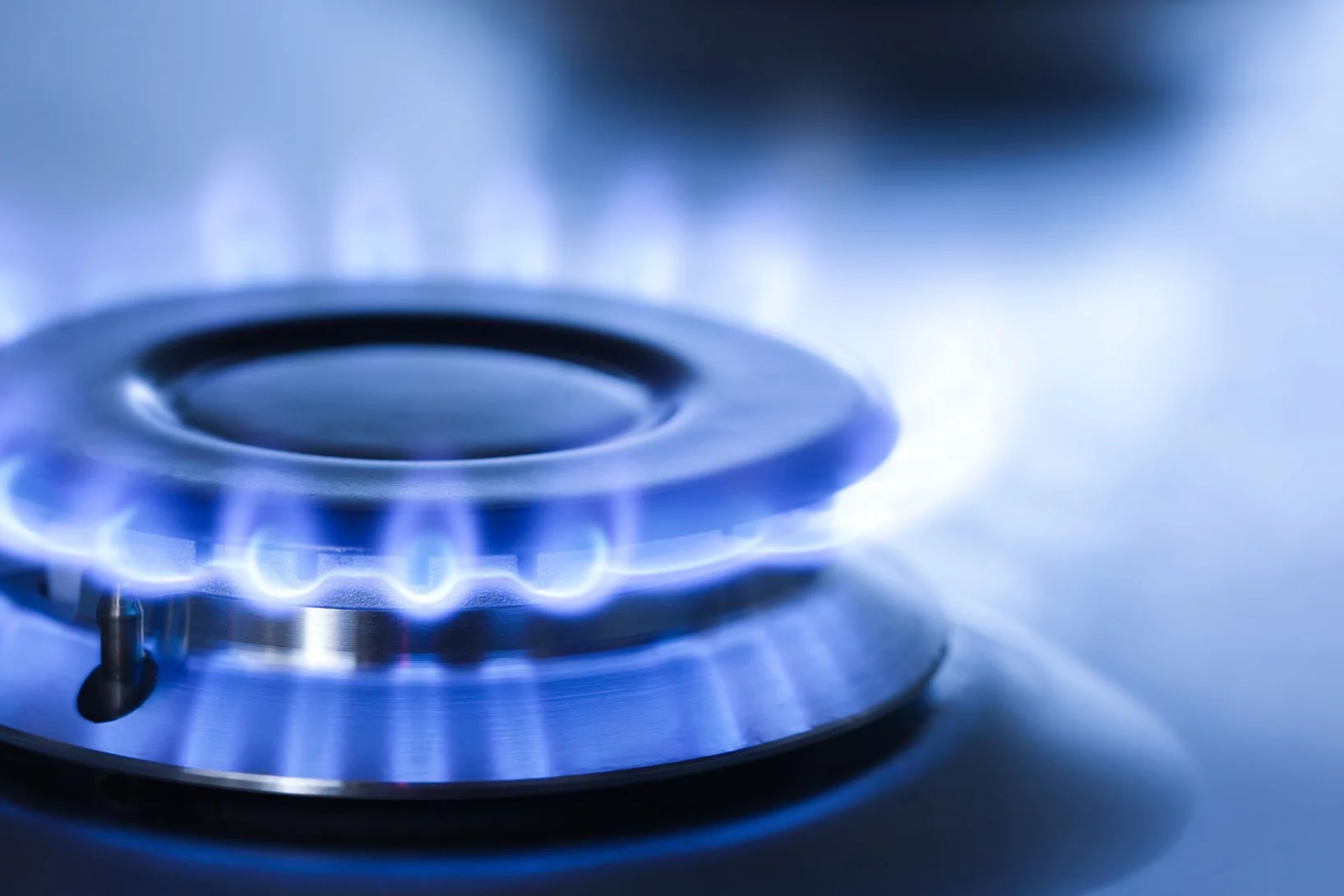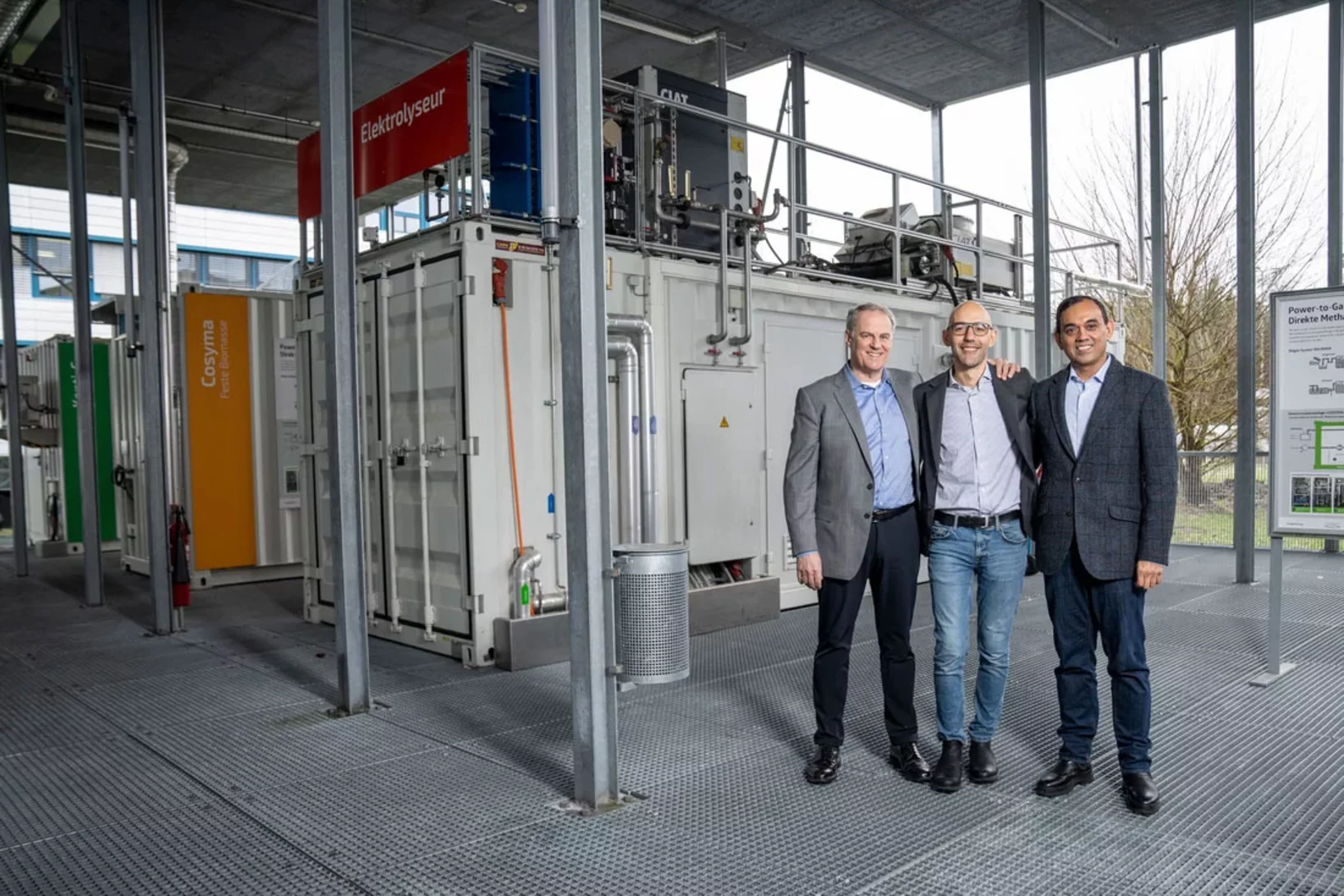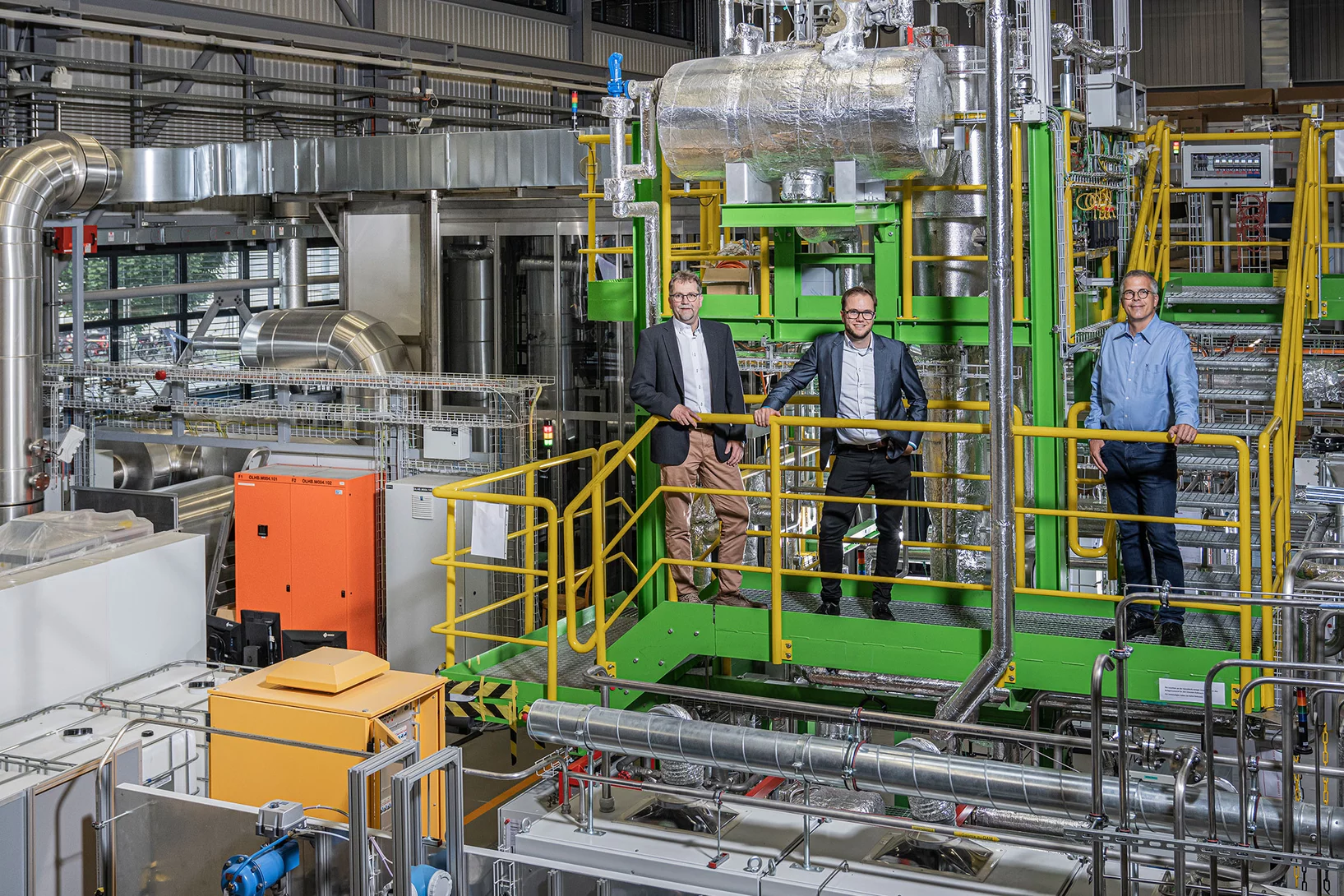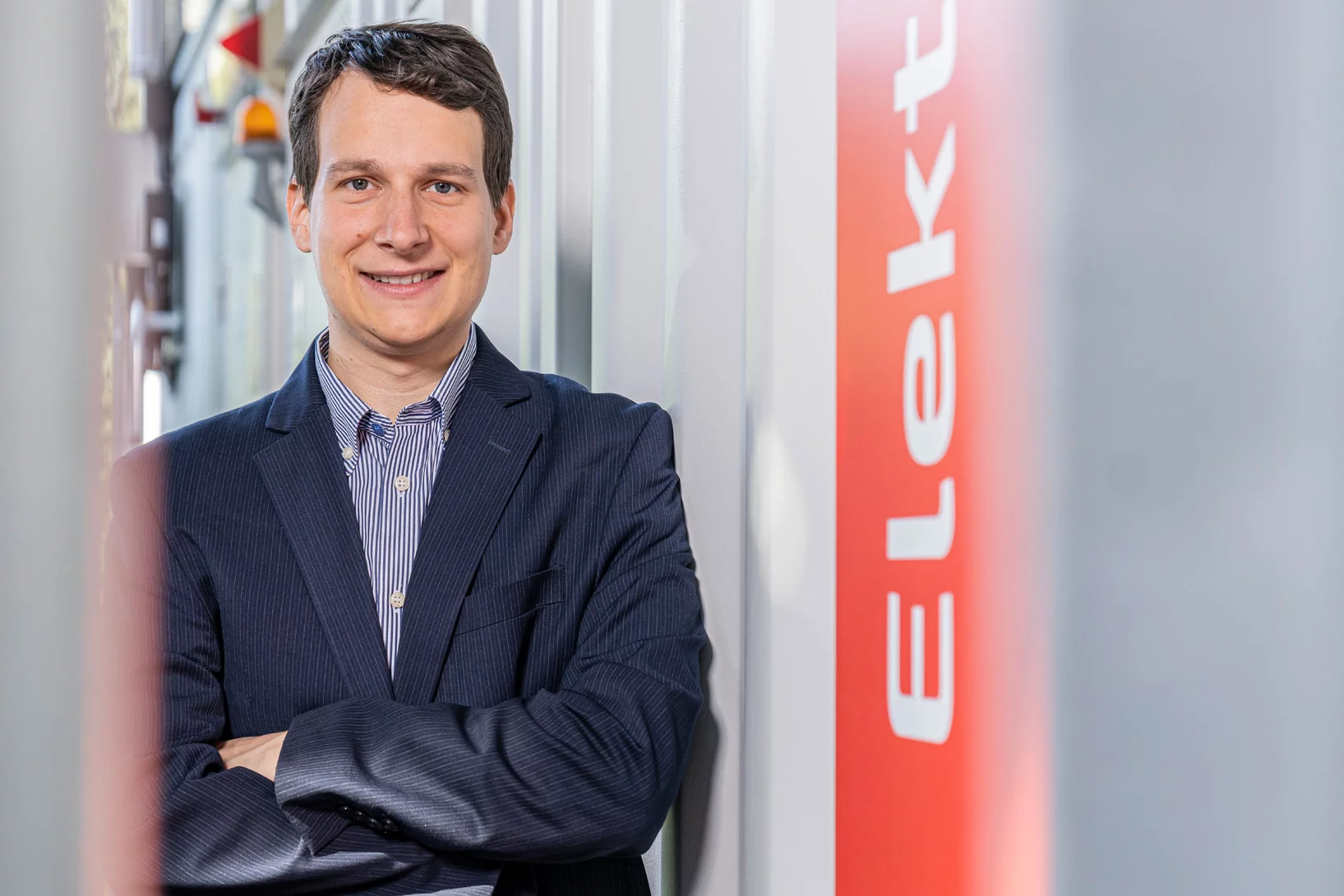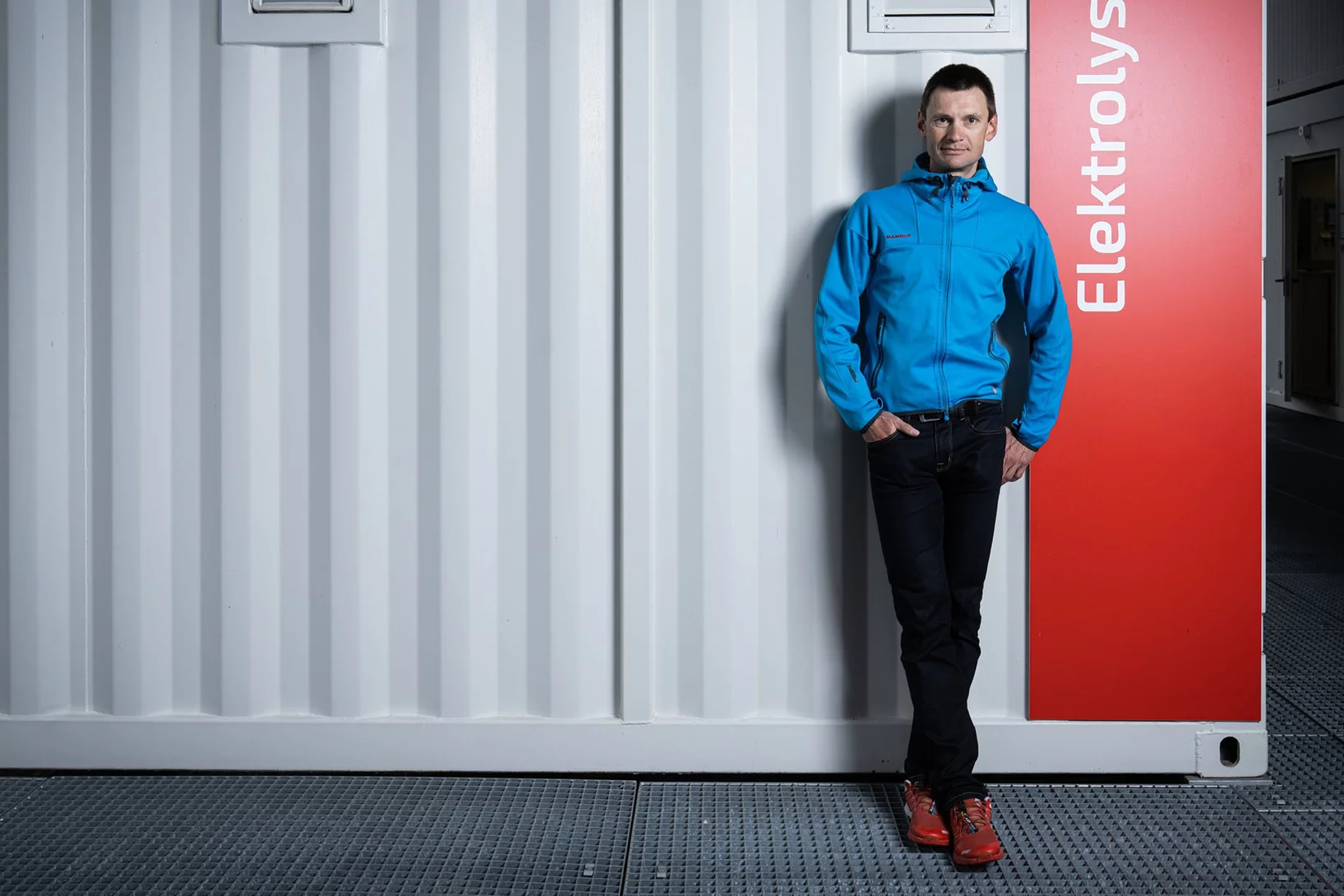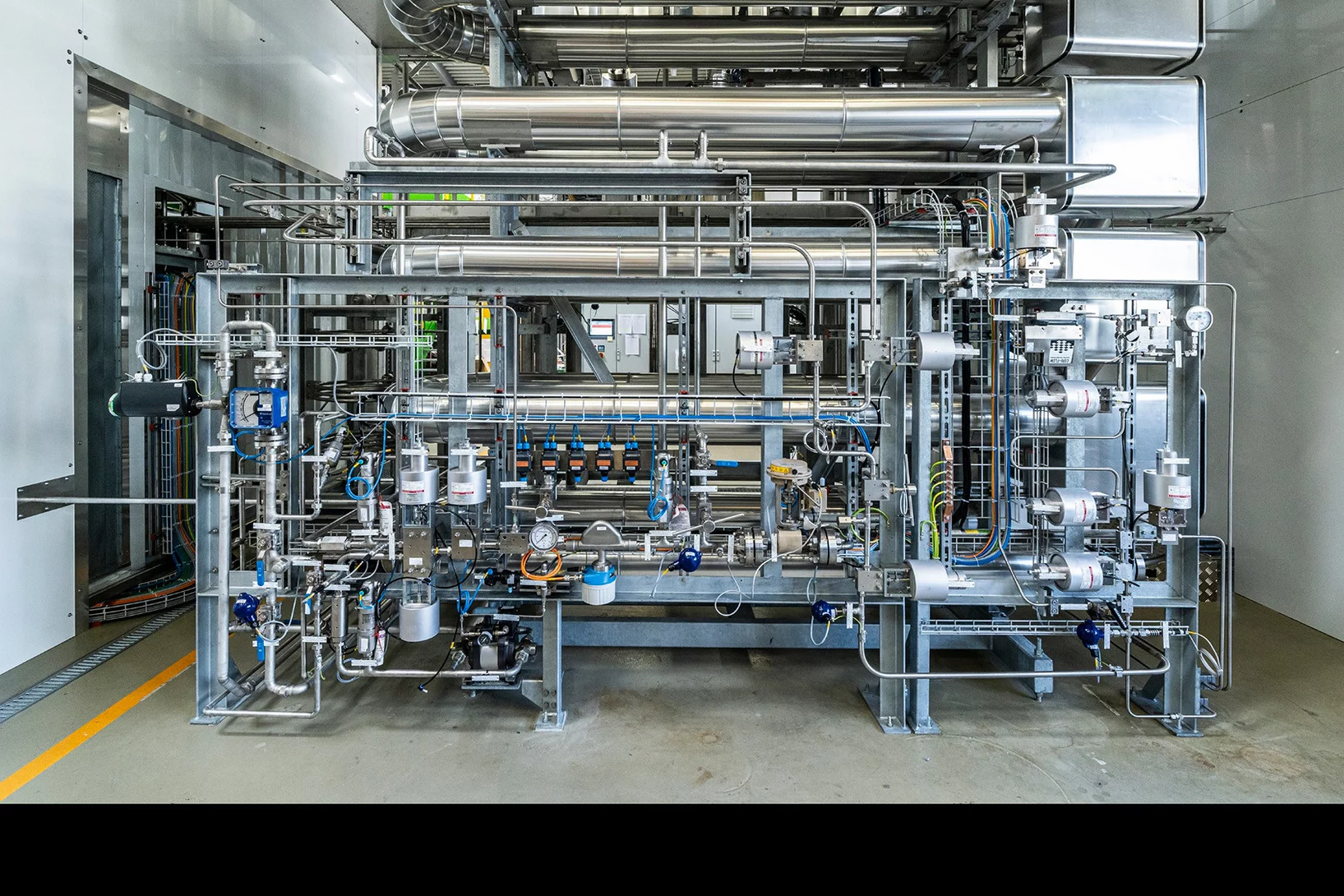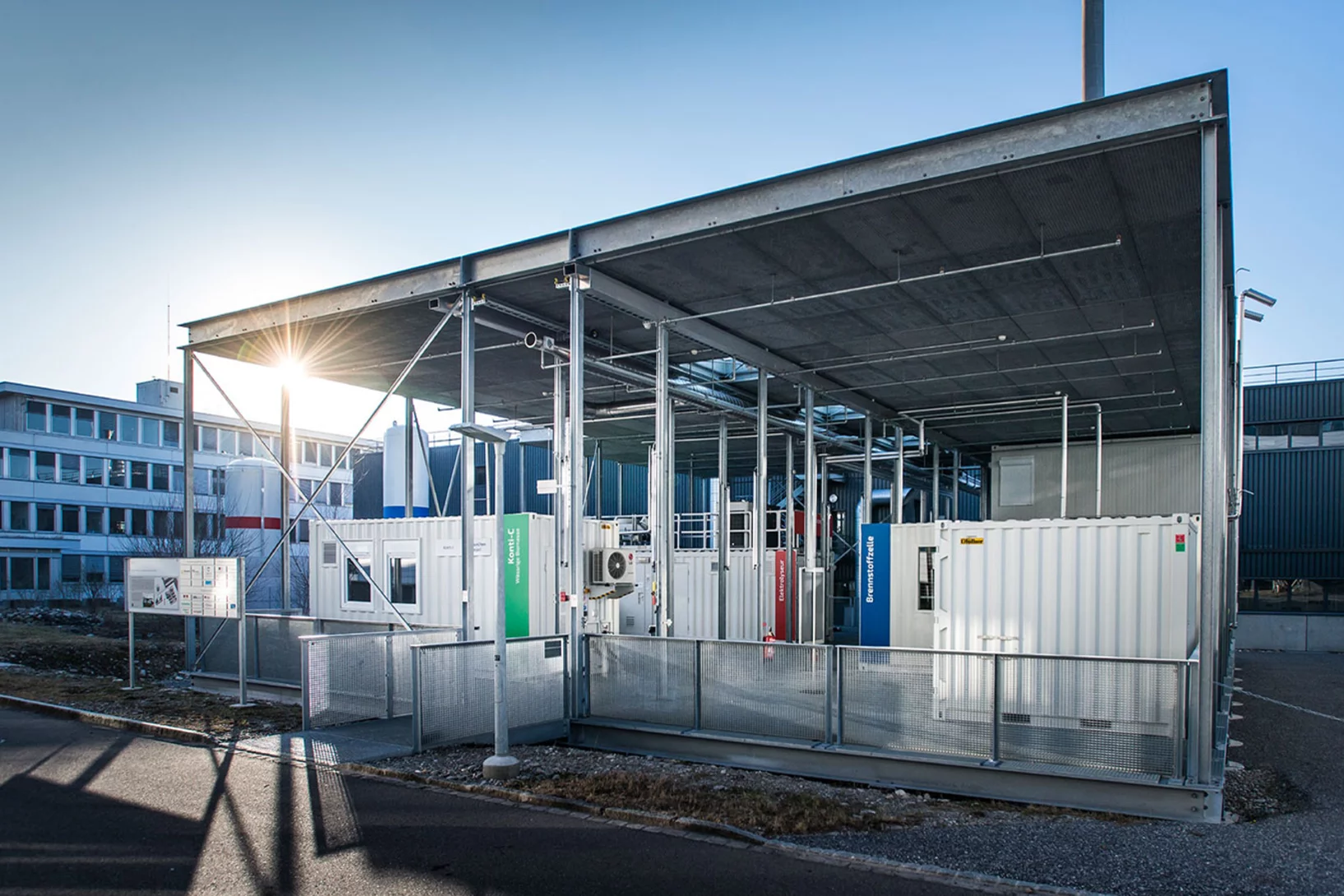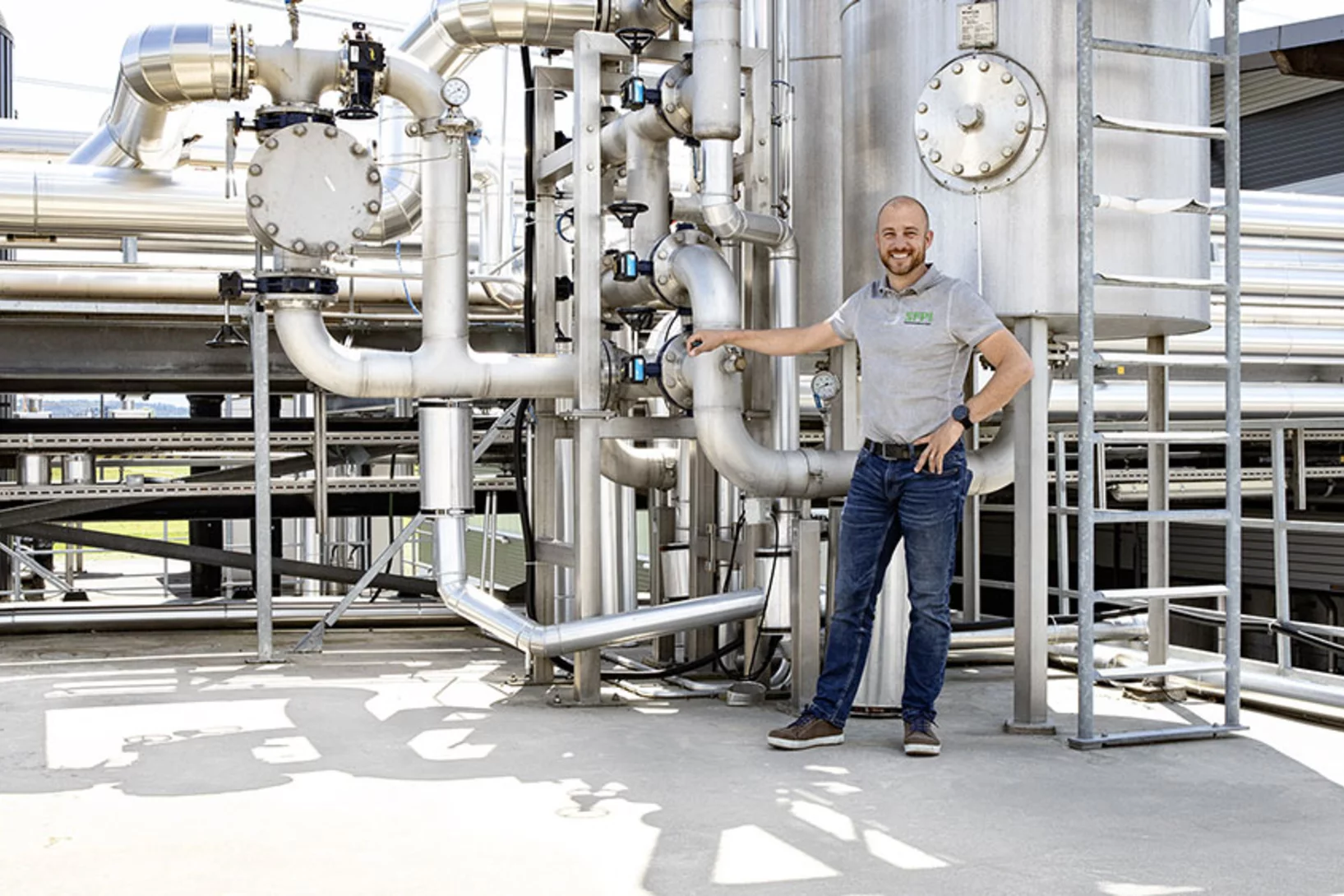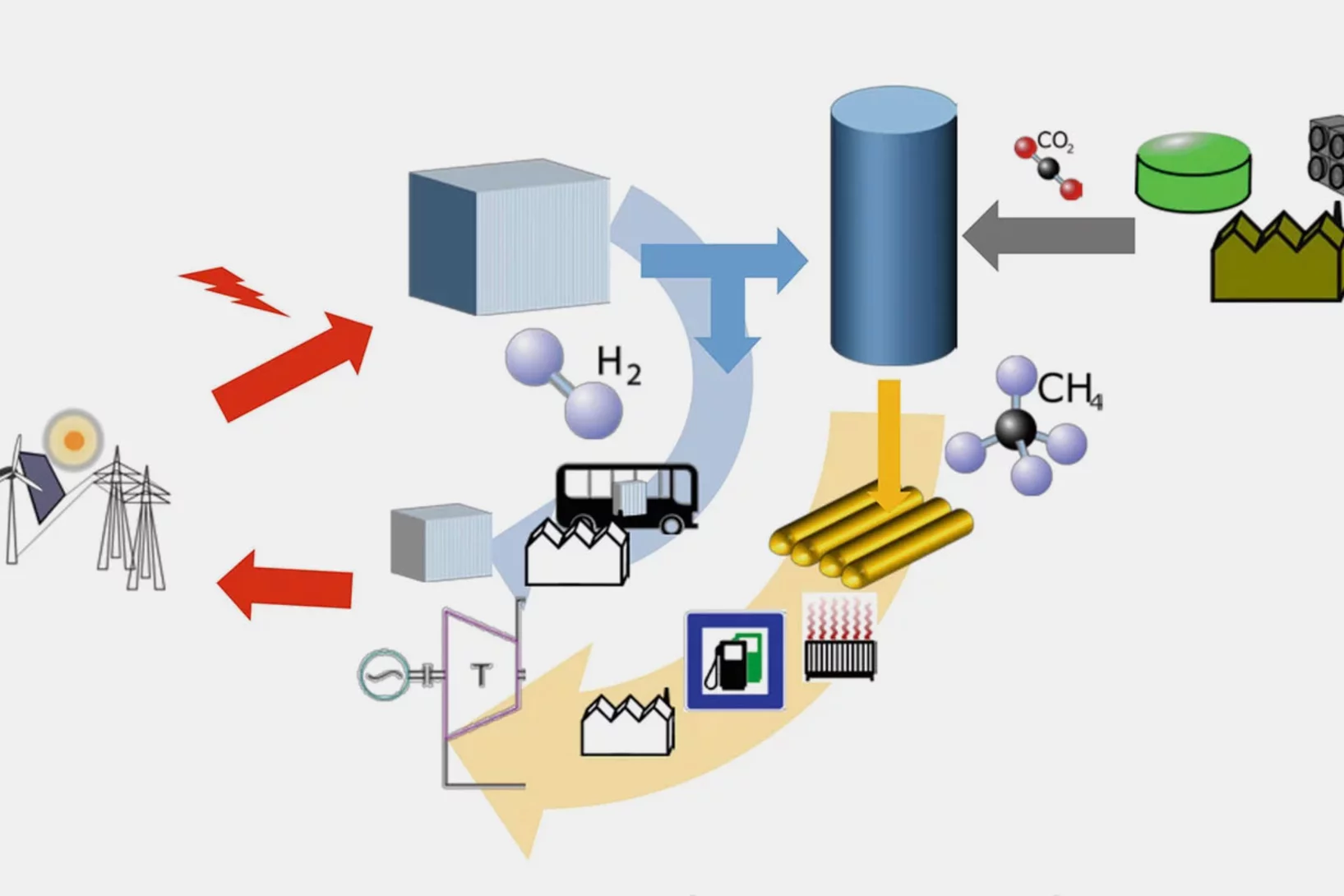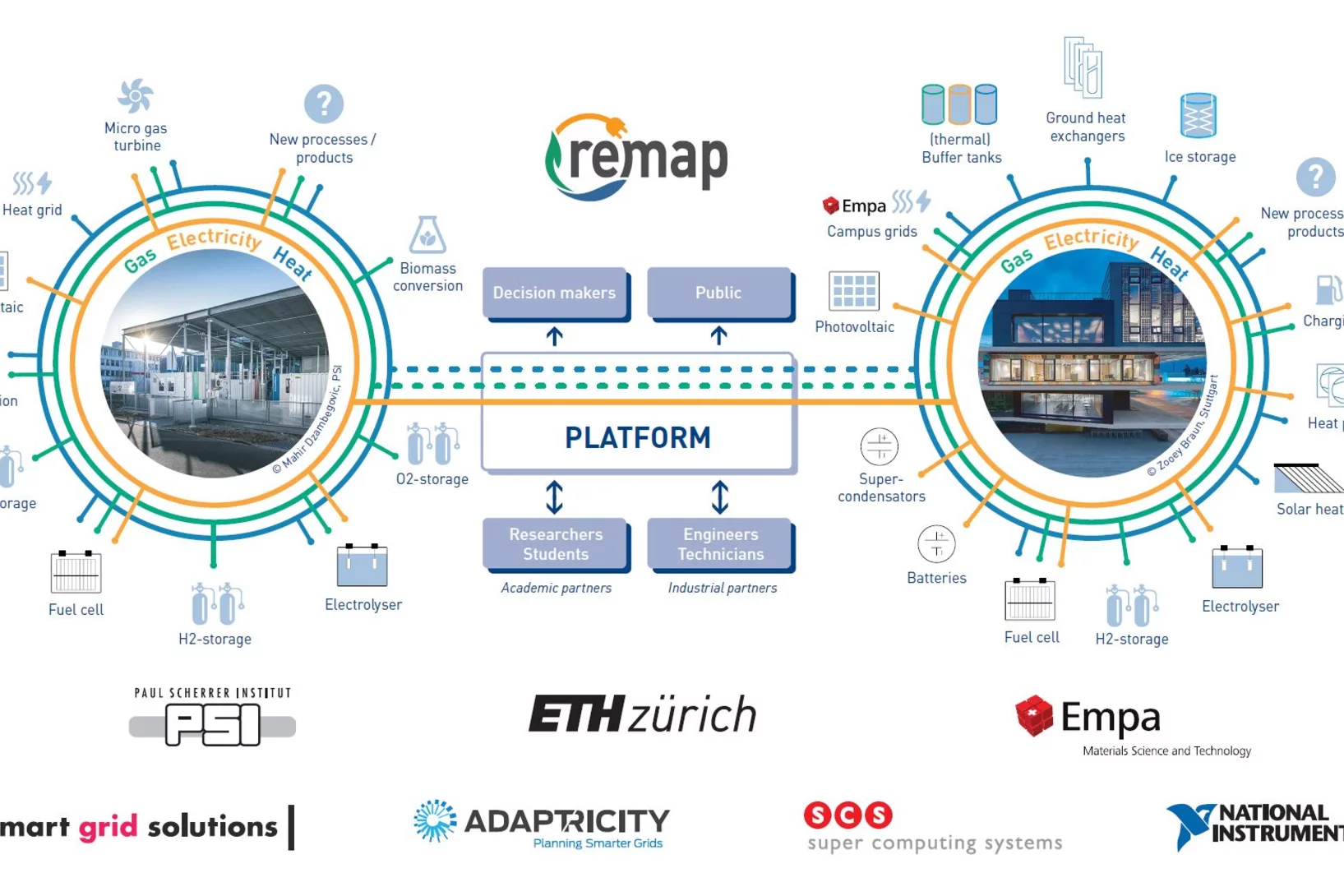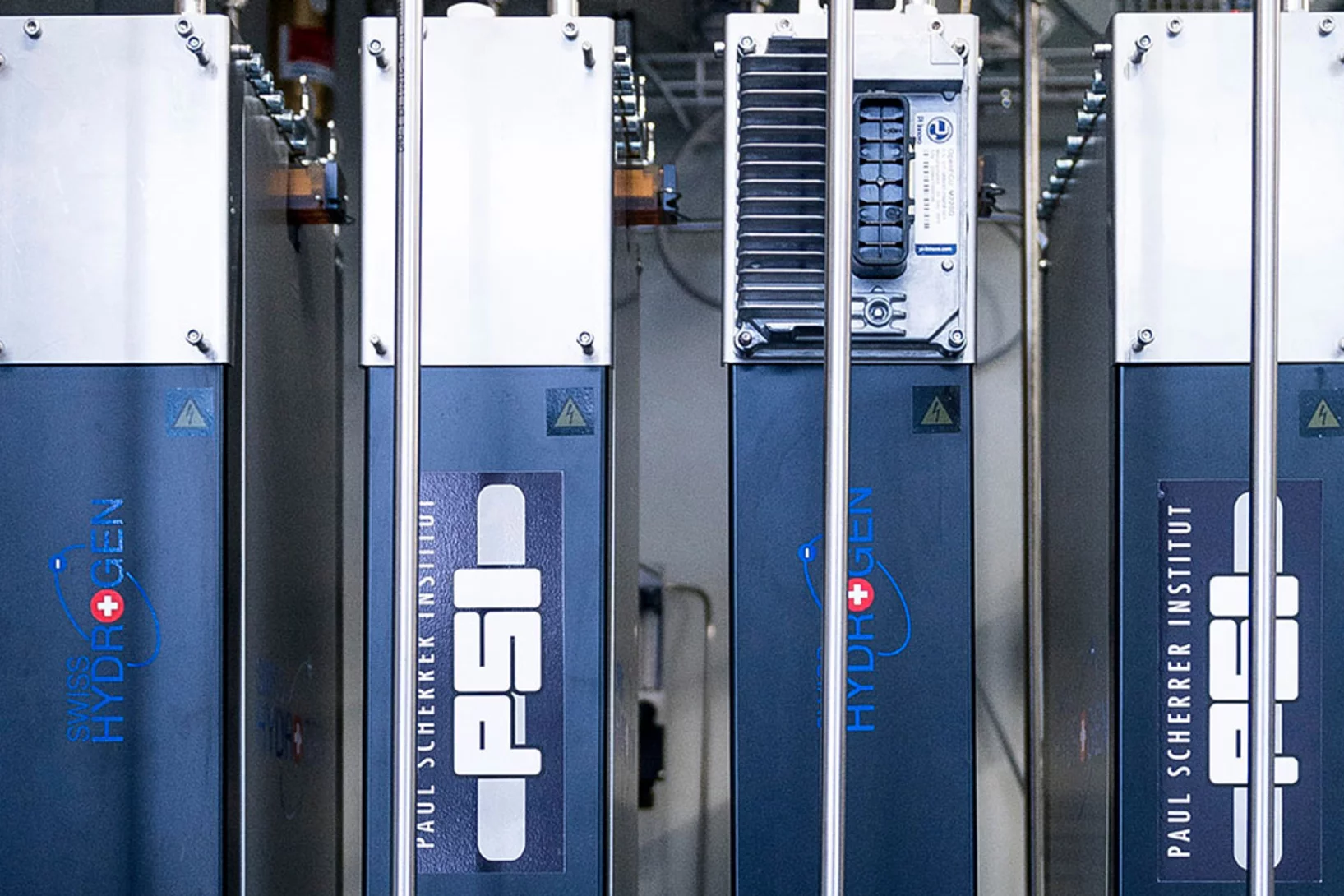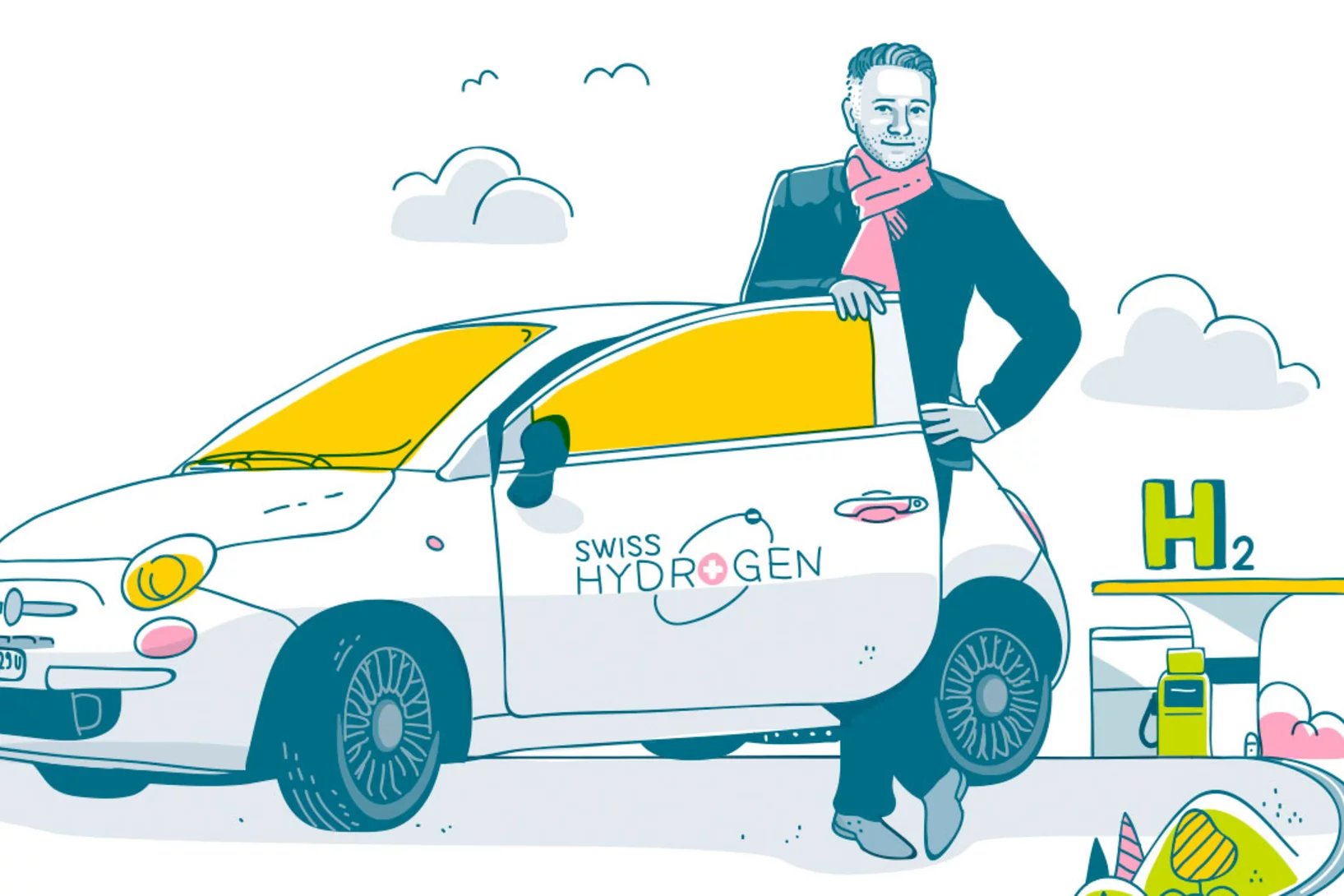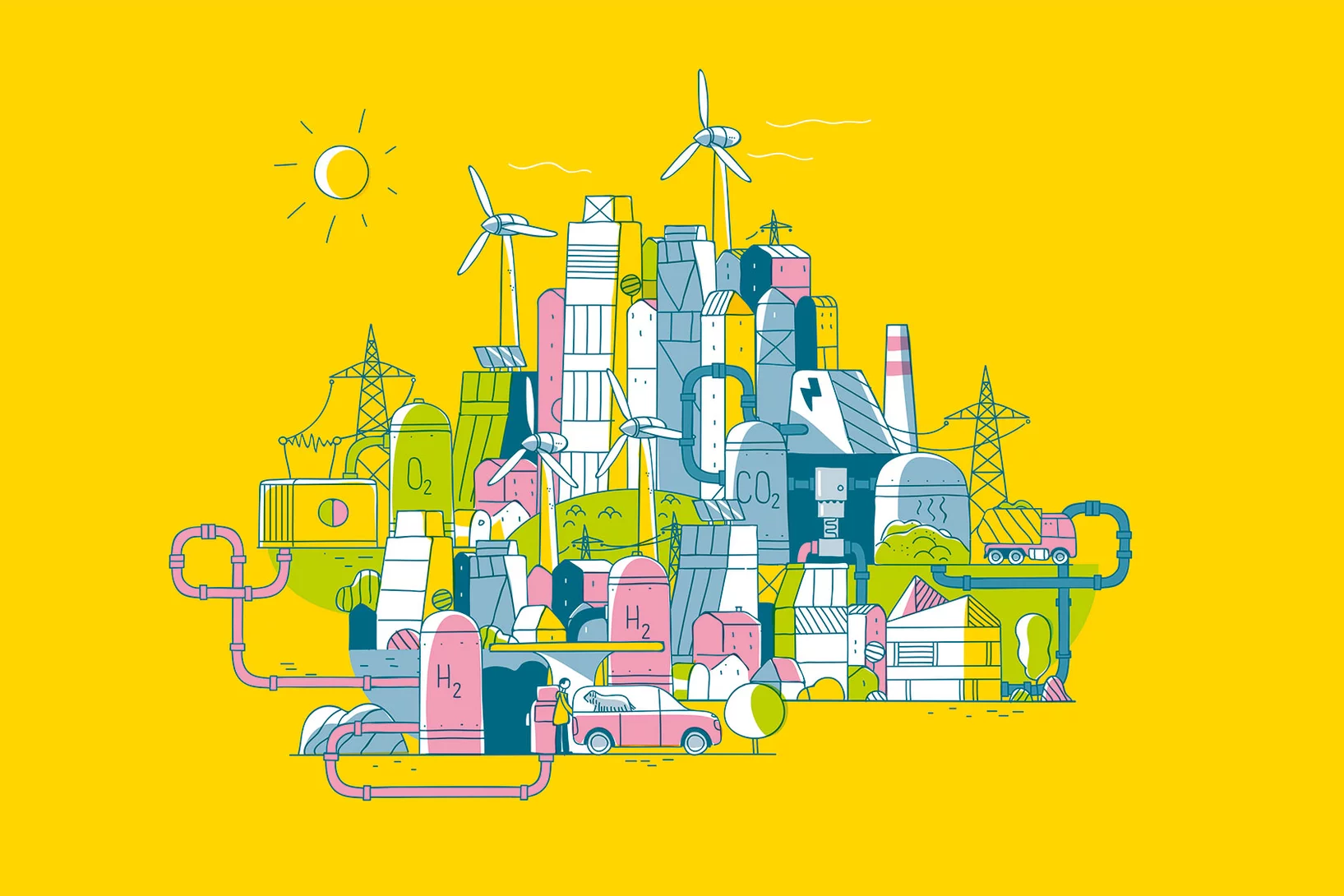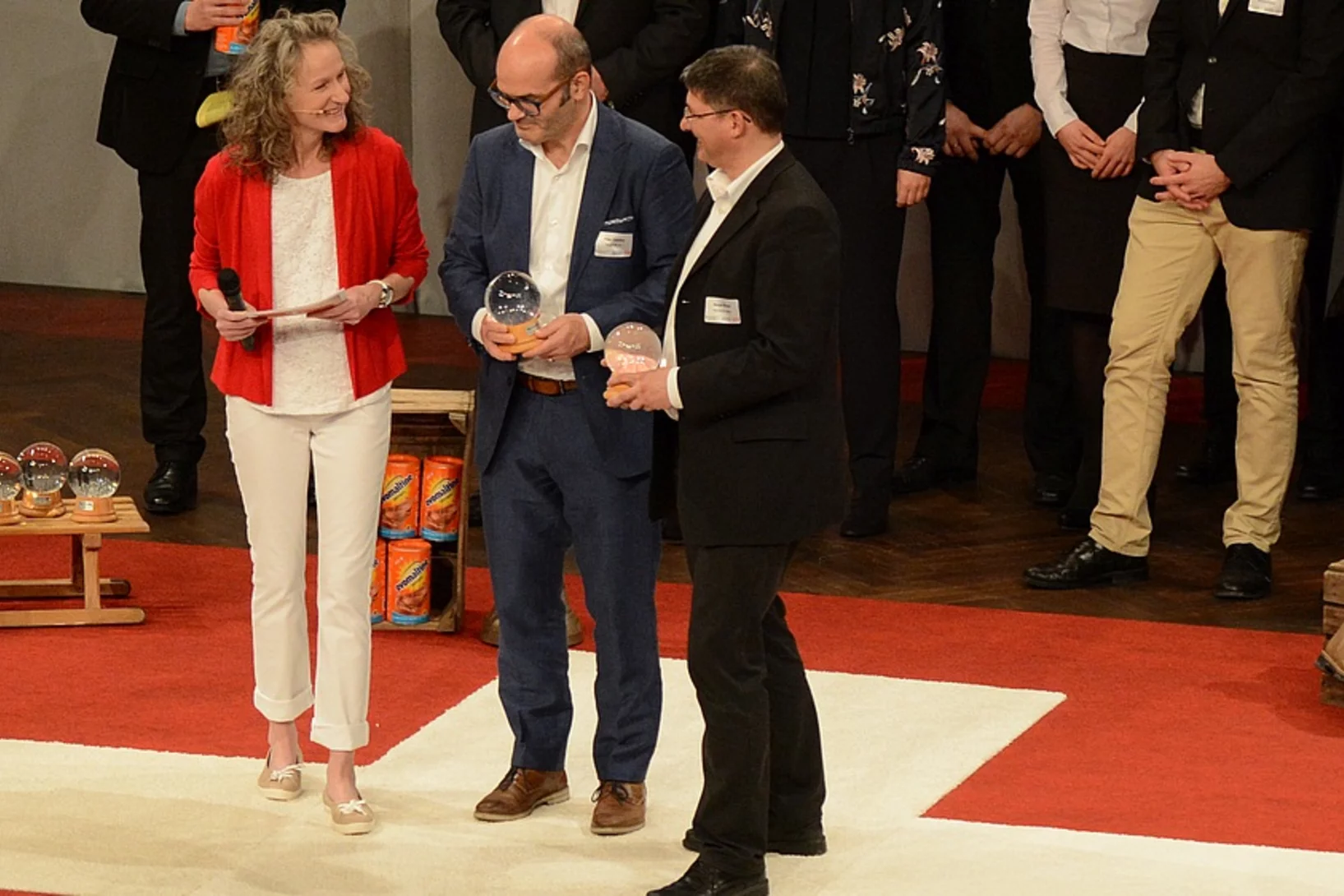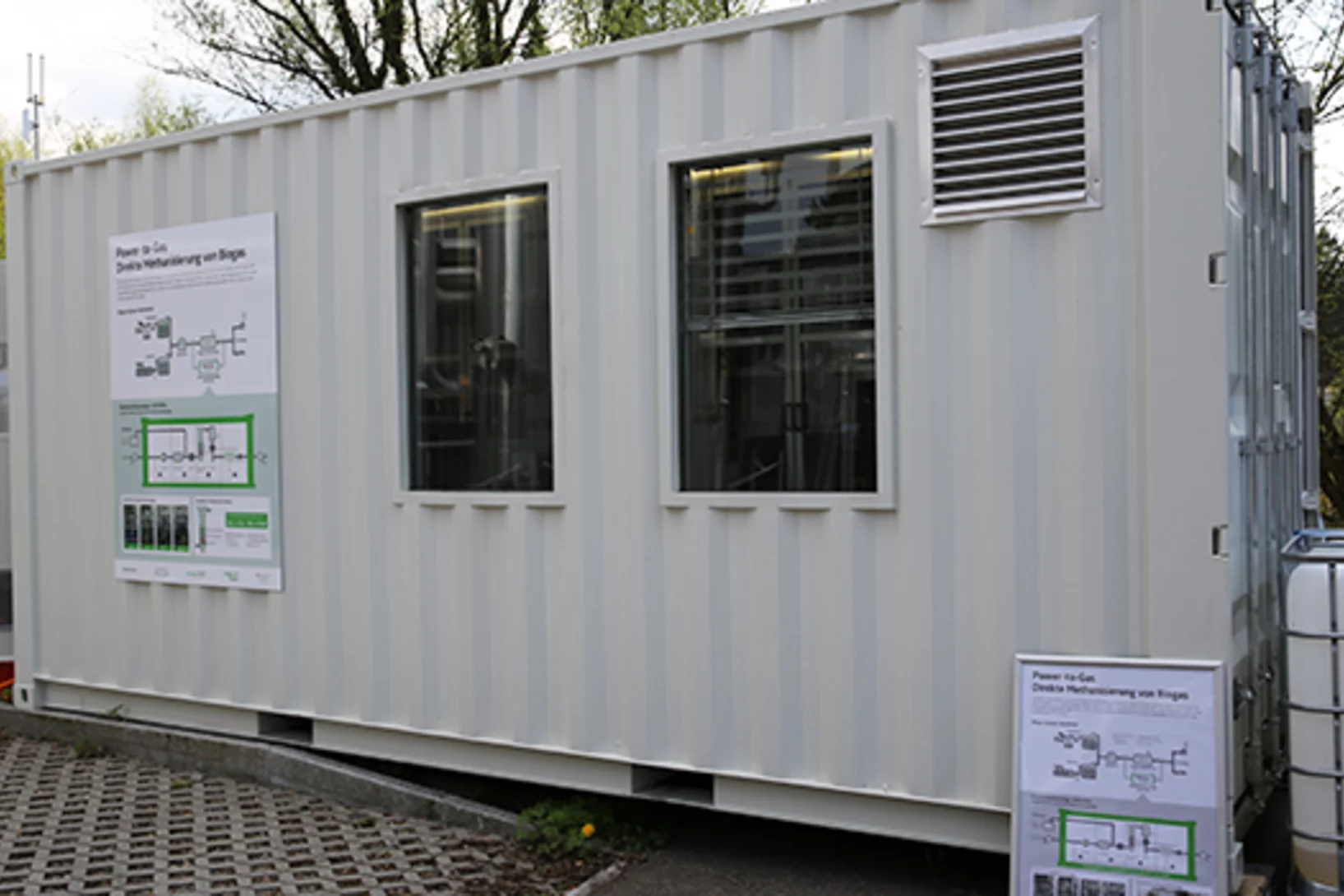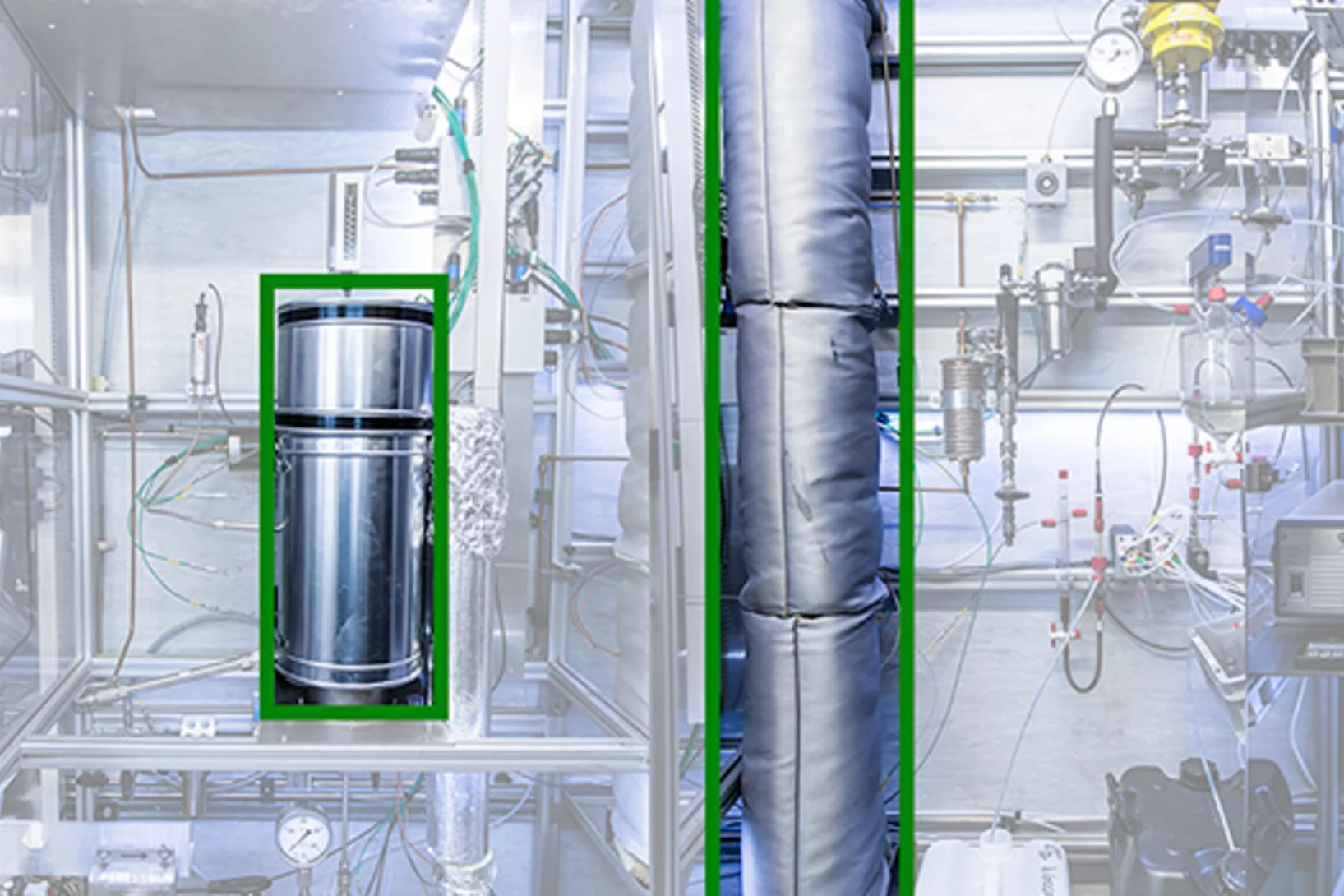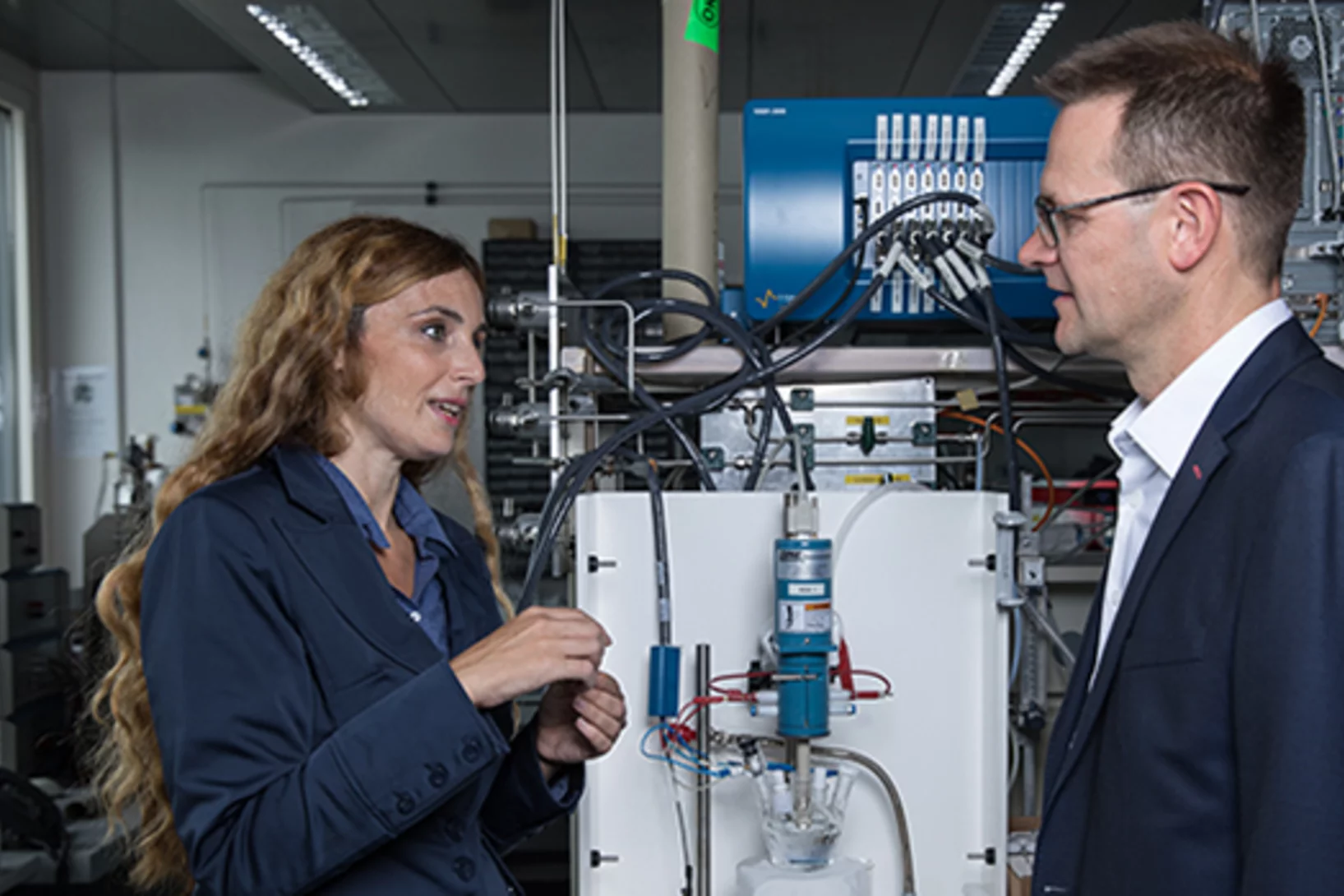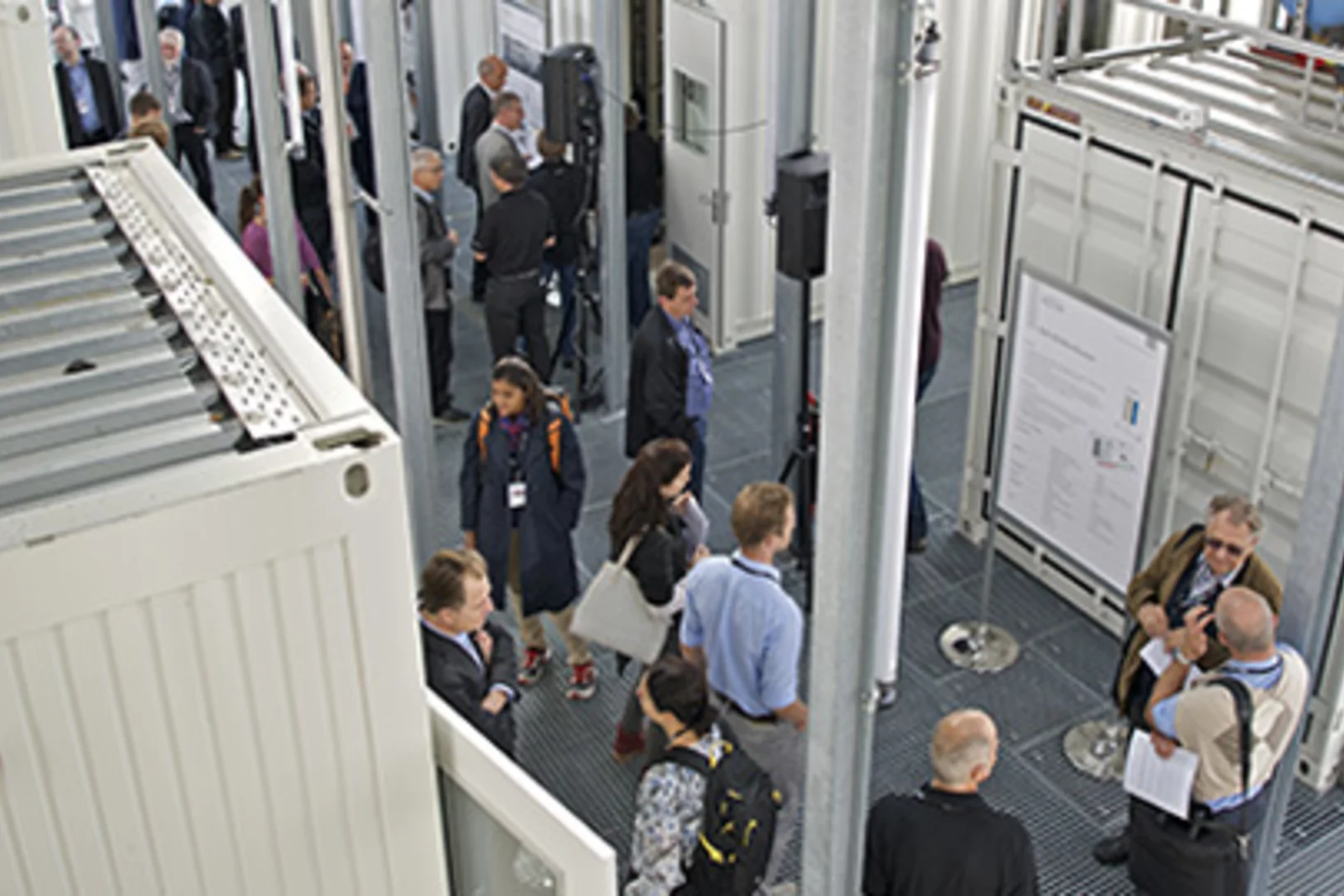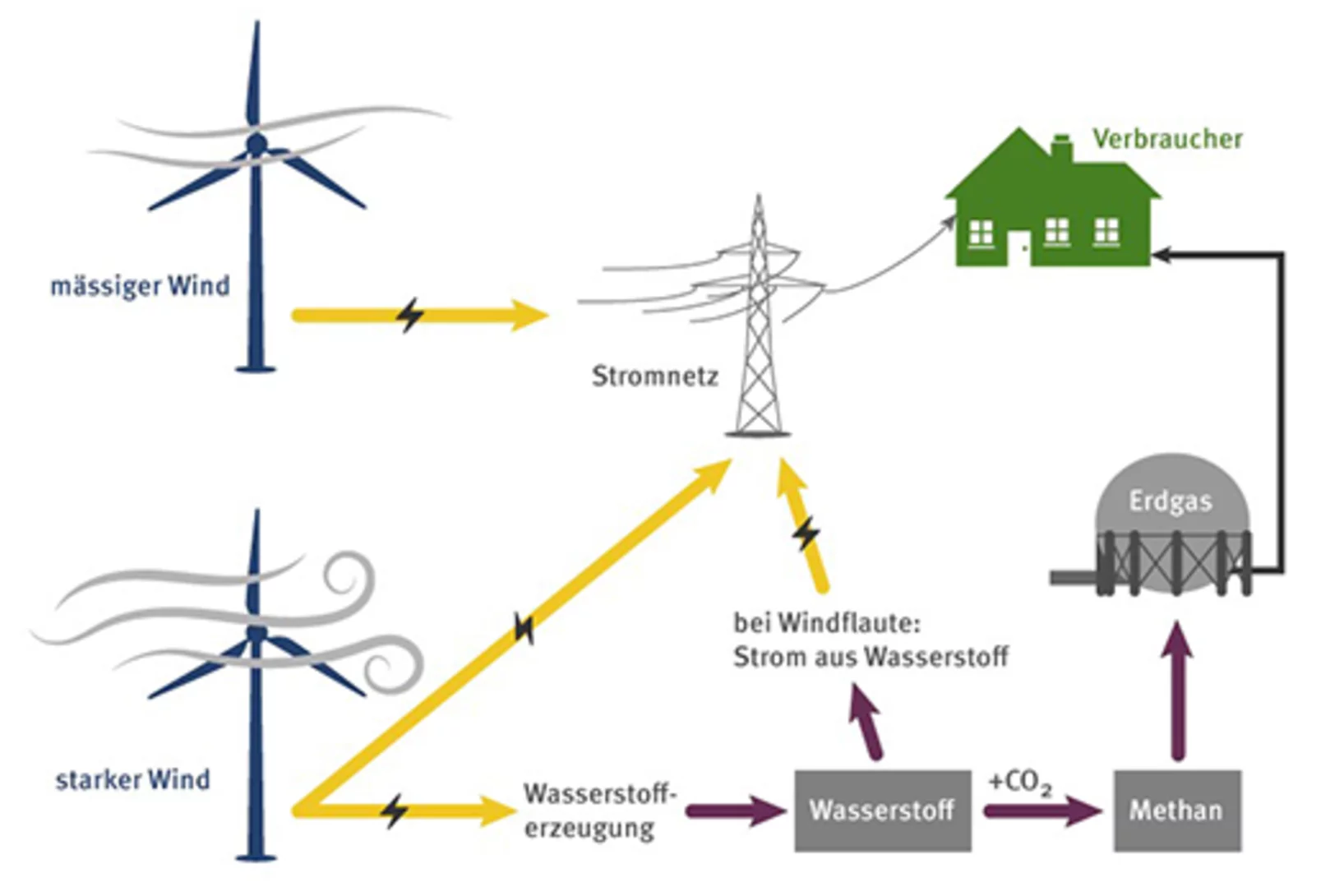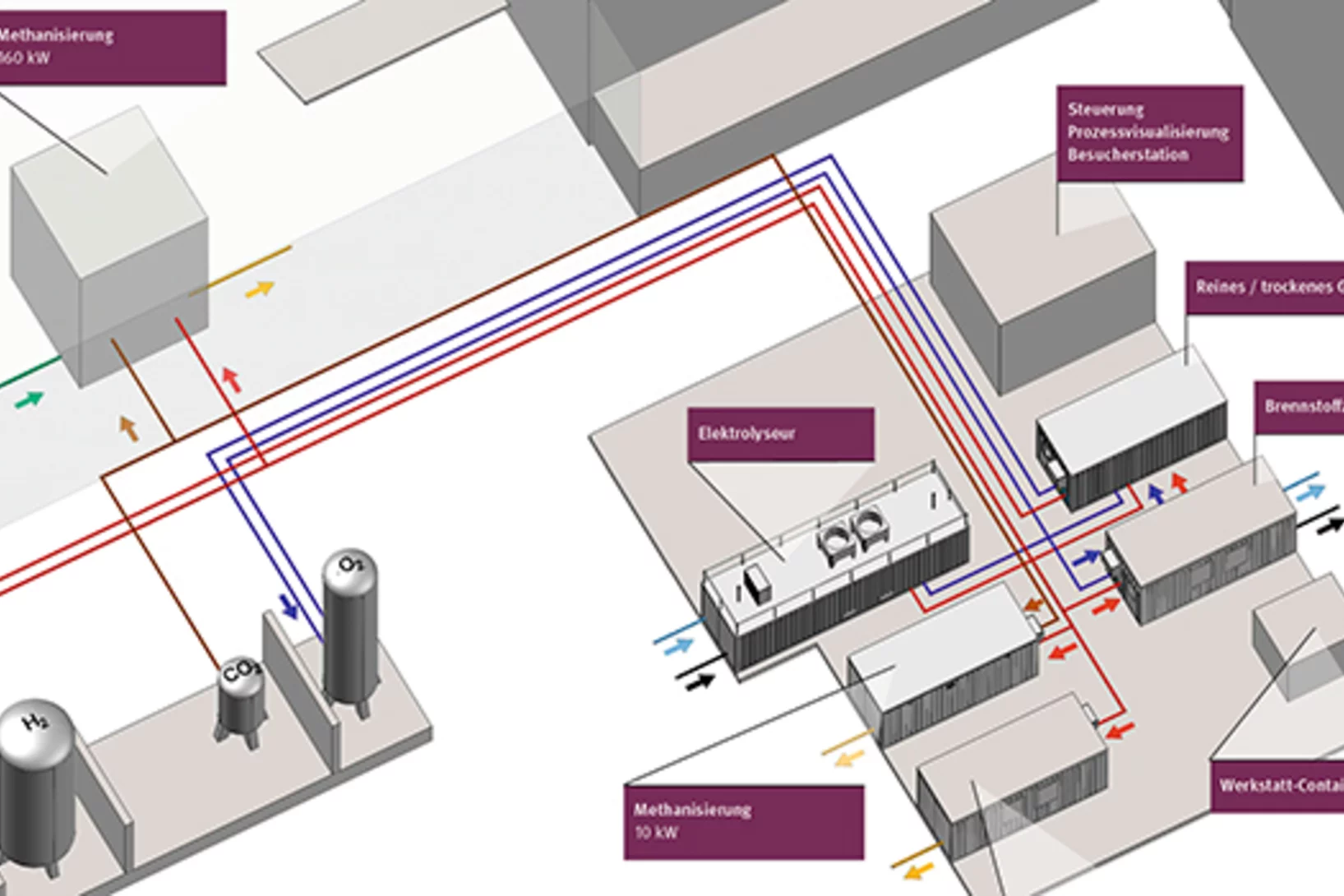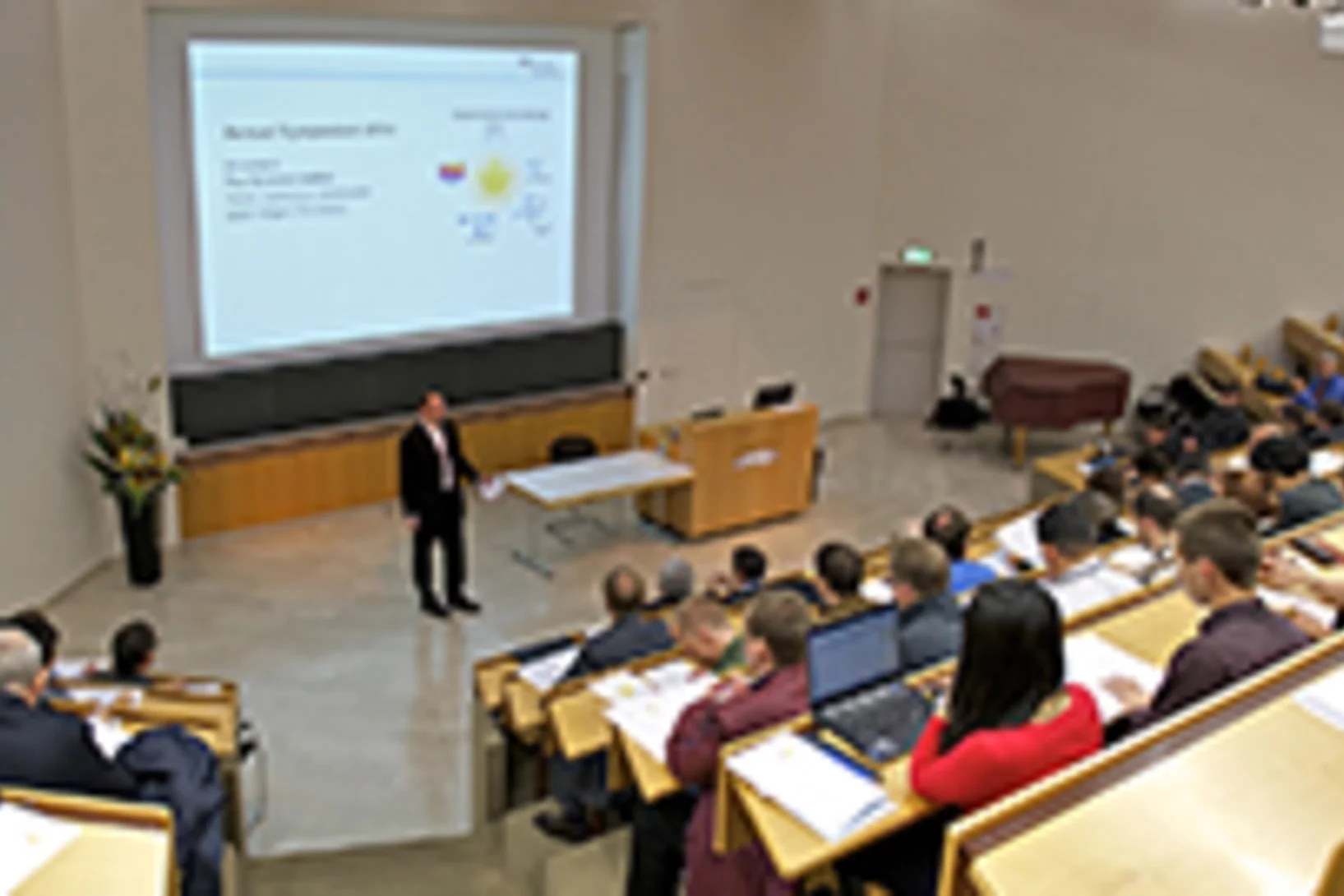Show filters
iLab and Synfuels at the Energy Days! at the Swiss Museum of Transport
October 18, 19, and 20, 2024
The iLab from the Paul Scherrer Institute will be part of the Energy Days with exciting workshops. Discover how we can store renewable energy using innovative technologies like Power-to-Gas and drive the energy transition forward.
Sustainable aviation fuel from the PSI campus
In collaboration with climate start-up Metafuels, a pilot plant for the production of sustainable aviation fuel is being set up on the PSI campus.
Is climate-neutral air travel possible?
Air transport too is to become climate-neutral – how can sustainable fuels, like those developed at PSI, contribute to this?
How can renewable electricity be used all year round?
The federal government’s Energy Strategy 2050 envisages a substantial expansion of photovoltaic systems. But where will the electricity come from when the sun isn’t shining? The solution could be hydrogen.
Methane as an energy store
Researchers at PSI and the start-up AlphaSYNT are working together on a solution for efficiently storing energy.
How can we secure our gas supply?
Switzerland depends entirely on foreign gas imports. How can we escape from this dependence and guarantee our gas supply? Synthetic methane might be a solution.
A greener alternative for aviation fuel
Air travel with no carbon footprint – PSI and the Metafuels AG develop a new technology to produce sustainable aviation fuel.
Combining forces for the energy transition
The Paul Scherrer Institute PSI and the start-up AlphaSYNT are piloting a new approach for storing energy in the form of methane gas.
Power-to-gas system for energy independence
New technology provides synthetic natural gas for domestic heating
Blue hydrogen can help protect the climate
The key is to eliminate methane leaks.
Getting maximum energy out of biomass
Researchers at the Paul Scherrer Institute PSI start operation of a revolutionary pilot plant for production of synthetic biogas.
Green fuels for aviation
In a new initiative, PSI and Empa want to jointly develop a process for producing kerosene from renewable resources.
Foundations for the energy system of tomorrow
On the way to a sustainable energy system, technologies that help to flexibly convert and efficiently store energy are becoming increasingly important. ReMaP, a novel research platform, aims to investigate these urgent issues under realistic conditions.
Clean biogas for a successful energy transition
PSI researchers have set up camp at a biogas plant near Lucerne. Between meadows and gigantic fermenters, they are investigating how they can remove impurities from the biogas to make this energy source even more usable.
The energy system of the future and Power-to-X
Researchers at the Paul Scherrer Institute PSI analyse the potential of Power-to-X for Switzerland's energy supply and present their conclusions in a white paper. One finding: The costs for energy from Power-to-X could fall by up to one-third.
Testing the energy system of the future today, as realistically as possible
With the kick-off of the ReMaP project, companies have another opportunity to test their vision for the energy system of the future now. PSI's ESI platform helps to make better and more intelligent use of renewable energy in the future.
Power on demand
If photovoltaic or wind power plants produce more electricity than the network can absorb, valuable energy is lost. At the ESI Platform, PSI researchers are investigating how fuel cells can contribute to making this energy usable in a targeted way through storage.
Profitable for both sides
The young company Swiss Hydrogen is located in Fribourg. Here work is under way on competitive high-performance fuel cells that could be used in environmentally friendly vehicles or deployed as stationary power generators. In the company's collaboration with PSI, as CEO Alexandre Closset explains in this interview, both sides profit.
New technology undergoes real-world testing
The Zurich-based power company Energie 360° provides natural gas, biogas, and wood pellets throughout Switzerland. Now, with the Paul Scherrer Institute PSI, it has successfully tested a new Power-to-Gas technology to be implemented in the area of biogas production. The joint project was awarded the Swiss energy prize Watt d'Or 2018. In this interview, division manager Peter Dietiker talks about the collaboration with PSI.
Using what's there
At the Paul Scherrer Institute PSI, researchers are looking for solutions that enable energy from the sun, the wind, or biomass to be efficiently integrated into the Swiss energy system.
Efficient energy from biowaste – Watt d'Or for PSI and Energie 360°
Efficiently producing energy from biowaste: A technology developed at PSI and tested in collaboration with the Zurich-based energy provider Energie 360° makes it possible. It extracts significantly more methane from biowaste than conventional methods. For this important contribution to a sustainable energy supply, PSI and Energie 360° have now been awarded the Watt d'Or 2018 in the Renewable Energy category by the Swiss Federal Office of Energy.
Stress test passed
With a technology developed at the Paul Scherrer Institute PSI, around 60 percent more biogas can be produced from bio-waste than with conventional methods. But can it stand the test in practice as well? A 1,000-hour test at the Werdhölzli biowaste digestion and wastewater treatment plant in Zurich was able to answer this question with a clear yes. It was carried out in cooperation with the Zurich-based energy provider Energie 360°. The analysis of the stress test is now available.
More than just spilling the beans
Because of their high nitrogen content, spent coffee grounds are a popular garden fertilizer. Recycled in this manner, they already contribute to an environmentally friendly waste management. But they have the potential to deliver much more: a new procedure developed at the PSI allows high quality methane to be formed from spent coffee grounds. PSI researchers involved in a pilot project carried out in cooperation with the Swiss food producer Nestlé were able to show that spent coffee grounds left over during the production of instant coffee can be efficiently re-used elsewhere.
Nanomaterial helps store solar energy: efficiently and inexpensively
Efficient electrolysers are needed in order to store sun and wind energy in the form of hydrogen. Thanks to a new material developed by researchers at the Paul Scherrer Institute PSI and Empa, these devices are likely to become less costly and more efficient in the future. Researchers were also able to demonstrate that this new material can be reliably produced in large quantities, showing its performance capability in an electrolysis cell—the main component of an electrolyser.
Welcome to Esiville
A new visitor’s station at PSI tells the story of a Swiss town that makes the change from a conventional energy supply to one with new renewable energy sources.
How Switzerland could supply its electric power in 2050
The Laboratory for Energy Systems Analysis at the Paul Scherrer Institute PSI is investigating how Switzerland’s electricity supply might look, up to the year 2050, under a variety of boundary conditions. On the basis of their calculations, the lab’s researchers are able to generate insights on possible future developments of the energy sector, for example, determine how an ambitious reduction in CO2 emissions could be achieved at the lowest possible cost.
Higher methane yield from bio-waste
Within Switzerland’s bio-waste a huge amount of precious energy is hidden. That’s because valuable methane, the main constituent of natural gas, can be obtained from it. With a technology developed at PSI, the yield of methane from bio-waste could be increased considerably in the future. A long-term test conducted in cooperation with Energie 360° at the Werdhölzli fermentation and wastewater treatment plant is expected to advance this technology further along its path to industrial use.
24 hours at the ESI Platform (video)
How can surplus power that can’t be fed into the electric grid be made usable? A fictitious day at the Energy System Integration Platform at the Paul Scherrer Institute PSI.
Renewable energy: Experimental platform ESI is starting up
This fall, the time has come: The Energy System Integration Platform at the Paul Scherrer Institute PSI goes into operation. Today, in the framework of the double conference Networked Energy Research Switzerland, it was presented to the media and around 150 representatives from politics, industry, and science.
Turning Electricity into Gas – and back into Electricity
As capacities for producing solar and wind energy increase, integrating these into the existing energy system is becoming more of a challenge. The ESI platform is testing methods for successful integration. The answer: storing surplus energy as gas.
Structure of the ESI Platform
The road to a sustainable energy future leads through the integration of new renewable energy sources, from the sun, the wind, or biomass. Using the Energy System Integration or ESI Platform, research and industry can test promising approaches in all their complex connections and interrelations.
Biomasse als Stütze der Energiewende
Mit 80 Teilnehmerinnen und Teilnehmern fand am 2. Dezember am Paul Scherrer Institut PSI die erste Jahreskonferenz des Kompetenzzentrums des Bundes für Bioenergie (SCCER BIOSWEET) statt. Das im Rahmen des Aktionsplans Energieforschung Schweiz gegründete Kompetenzzentrum definierte in der Tagung die Ziele, Strategien und Positionierung der Bioenergie-Forschung vor dem Hintergrund der neuen schweizerischen Energiepolitik.This news release is only available in German.
Das Kompetenzzentrum Speicherung zieht nach einem Jahr Bilanz
Am vergangenen 4. November fand am Paul Scherrer Institut das erste Jahressymposium des Kompetenzzentrum des Bundes für Forschung zu Strom- und Wärmespeicherung (SCCER Heat and Electricity Storage) statt. Vertreter aus den beteiligten Forschungsgruppen sowie aus Industrieunternehmen mit einem Bezug zum Thema Speicherung berichteten in ihren Vorträgen über die jüngsten Fortschritte auf dem Gebiet der Wärme- und Stromspeicherung in der Schweiz. Die Tagung zeigte die Intensität der Transformationen, die von der Energiestrategie 2050 in Gang gesetzt worden sind.This news release is only available in German.
New Renewables on integration course
The Swiss government’s Energy Strategy 2050 includes a significant expansion of renewable energy such as solar and wind power. The integration of this electric energy, which is produced in a decentralised way and with temporal fluctuations, poses a major challenge for power grids. One possible solution involves using the electricity surplus that would otherwise overload the grid for the production of gases such as hydrogen or methane. The electric energy would thus be stored temporarily in form of chemical energy. These gaseous energy carriers can be converted back into electricity, heat or kinetic energy (in gas engines) at a later date as and when needed. Dubbed power to gas, the concept is the focus of the new Energy System Integration (ESI) Platform at PSI.


